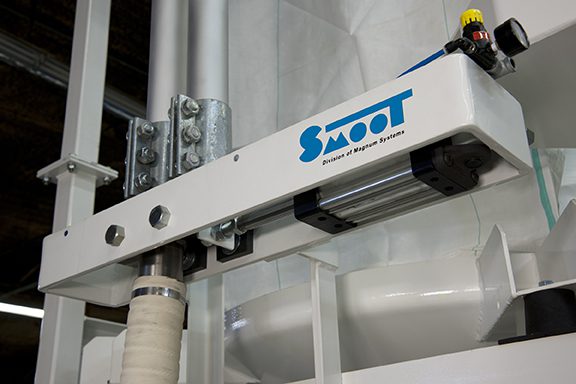

"But still they lead me back, to the long winding road."
- Paul McCartney
Unlike the twists and turns in life, where solace often needs to be found with the help of balladeers like Sir Paul, the twists and turns in a pneumatic conveying line are usually handled by a device commonly called a diverter valve.
Diverter valves are a simple concept. Originally developed as an alternative to a person going out to physically change hose positions from one pipe to another, diverters prevent “Bob” from having to stop what he is doing to change the hose from pipe A to pipe B, and instead just press a button. Viola!
Most basic diverter valves have a flapper mechanism in them that flips back in forth between 2 different legs. They are made this way because of the low cost of construction. In order to keep a good seal, however, they usually need some kind of flexible seat either on the flapper or in the form of a sleeve in the body of the valve for the blade to squish up against. Since this sealing material is in the convey stream, it has a tendency to wear out and need to be replaced, making maintenance upkeep tedious. (BTW…how exactly do you know when it’s leaking until it’s too late?)
As an alternative to having a seal in the material stream, valves developed over time with machined plugs and tunnels. These valves are typically made of heavier cast materials and seal by operating with tight clearances, much like a rotary valve. While requiring less maintenance than a flapper type valve, they are more expensive to purchase because of the heavy cast housing, plug/tunnel and machining requirements.
The Series 37 Diverter from Smoot Co offers another alternative to these 2 types. Instead of trying to figure out how to make a better seal material or addressing the issue with bigger and heavier, we’ve went back to our roots (Eat your heart out Alex Haley) and developed a mechanism that wears less in the first place by simply creating a lower divert angle ( Keep It Simple Stupid). Where most diverters operate with a blade/tunnel offset at 45 or 60 degrees, the longer hose section of our valve design allows the angle of divert to be less than 18 degrees in most cases, allowing us to “Get Back to where we once belonged” (Get back Loretta) and put money back in your wallet at the same time and “Let it Be”.
For more information on Slide Diverter Valves Click Here.
Submitted By: Larry Eagan | Regional Sales Manager
Related Post
Why Use a Single-Source Systems Integrator Like Magnum Systems?
What Are the Advantages of Dense-Phase Pneumatic Conveying?
Mastering Integration in Manufacturing with Magnum Systems: A Deep Dive Podcast Episode
The Secrets of Valve Bag Sealing: Expert Insights from Magnum Systems